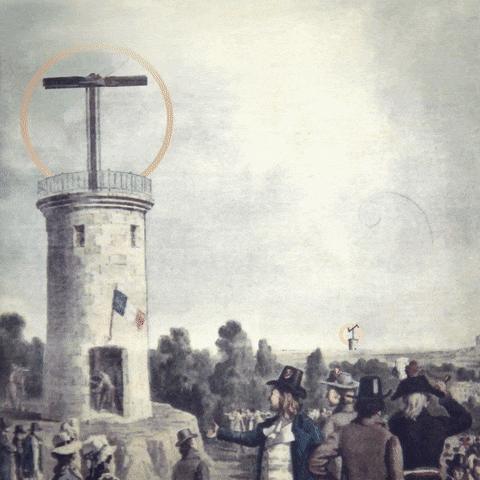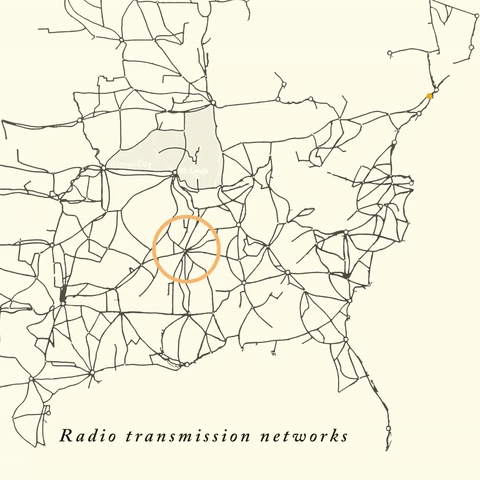While working as a creative fellow at Al Jazeera's new digital media channel known as AJ+, I was invited to take over their instagram account for a week. The instagram account was to have content that was visually delightful, informative and illuminative in some way. Since AJ+ is a channel that is built on the paradigm of the internet, I decided to do a short visual history of digital communication and bring attention to the platform on which it was living.
Below are gif loops from the Instagram posts, to view them with sound please start here.

This is a collage of a wireless telegraph station from the early 1900s located at the northern most point of Ireland. It was positioned to communicate with ships coming across the Atlantic. The "tap" has been the center of communication for the telegraph for 180 years and we continue to touch screens in order to communicate, work and sometimes share cat videos.

It’s unlikely that the first message sent between #Paris and Lille in 1792 using the Chappe optical telegraph was simply a ‘hi.’ The Chappe telegraph had wooden arms controlled by pulleys which could be moved into positions signaling specific letters and numbers. It could be thought of as the first practical #communicationsystem of the #industrial age, making its inventor, Claude Chappe, the first telecom mogul with his ‘mechanical internet.’#France was covered with a network of 556 stations stretching a total distance of 3,000 miles, which came to be known as Le Systeme Chappe. It was used for military and national communications until the 1850s.

The Telefontornet was the central#telephone exchange in #Stockholmdesigned around 1890 and connected some 5,000 phone lines from around the city. Shortly after the patent of the telephone in the late 19th century, there was a rush to connect everyone to the phone grid. However each telephone required its own physical line strung between a house to a phone exchange where the call was manually connected by a live operator. As one can see the#network was prone to accidents and deemed ugly by most onlookers, although it looks surreal in retrospect. The Telefontornet was decommissioned by 1913 as phone lines became buried underground and technology progressed. Photo courtesy of Tekniska museet

Here we see an 1879 edition of Punch magazine, which depicts an "electric camera obscura" called "Edison’s Telephonoscope." Inspired by Edison's audio only megaphone, the idea was a#machine that would provide real-time audio-video conferencing across continents. Although it was science fiction at the time, it represented a fever sweeping the world in the late 19th century due to the imminence of motion pictures. What did not yet exist was some way to convert light into electrical signals. Today the idea of real-time audio-visual communication is commonplace, we hardly give it a second thought.

This #collage combines two types of networks: a radio transmission network from a “Bell Telephone Magazine” published in the 1940s and a diagram of a neuron cell. The development of our modern system of communication was spurred often by the needs of militaries during wartime and private businesses. Humanity has used it’s collective intelligence to build systems that remind us of the most basic building blocks of our own #consciousness.
The technological and the organic have become irrevocably intertwined.
Credits : All original images from Public Domain libraries, Research and Text : Bharath Haridas, Text Edit: David Cohn, Japhet Week
Inspired by Hugh Dubberly’s Interactive Systems Class at CCA for which I was assisting.






